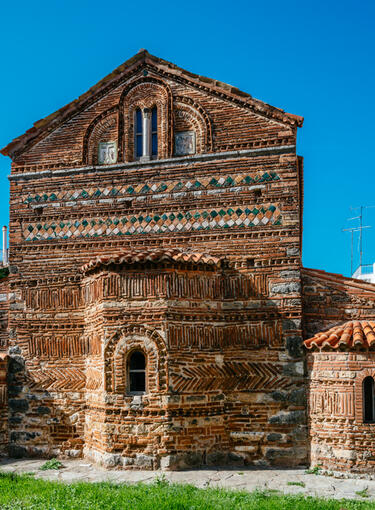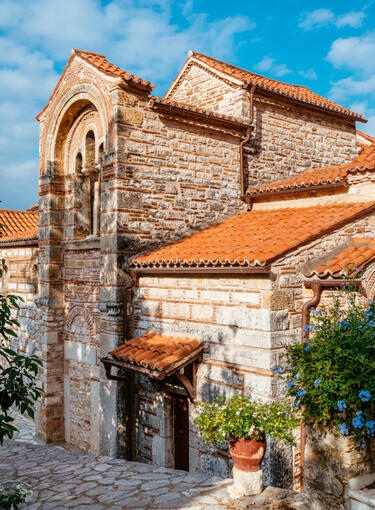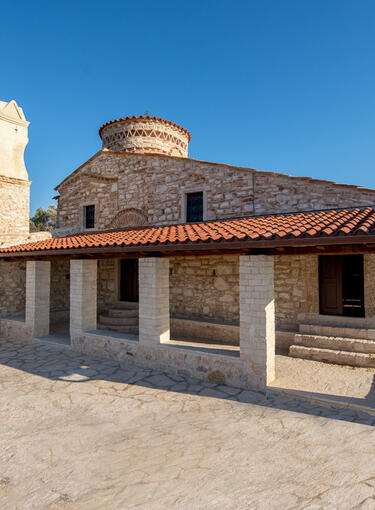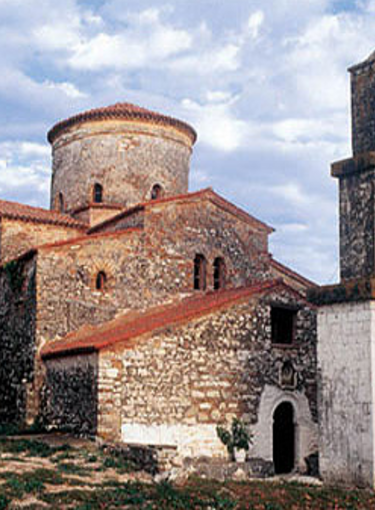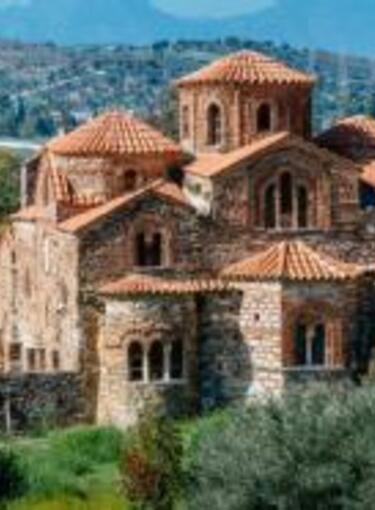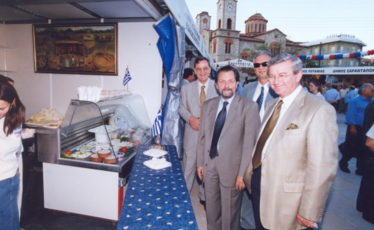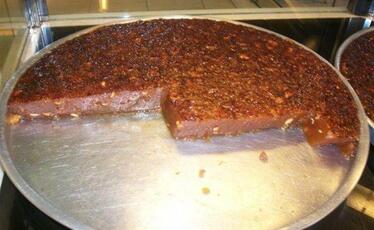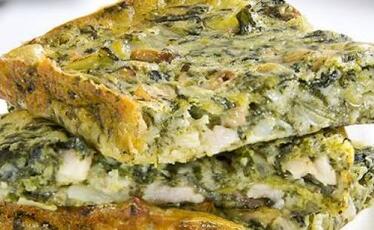The church of Panagia Parigoritissa (Virgin Mary of Consolation), dedicated to the Annunciation of the Virgin Mary, dominates the centre of the city of Arta, at the intersection of Parigoritra and Tzoumerka streets.
It is the most important monument of the Despotate of Epirus, which impresses the visitors due to its bold architectural conception.
The founding inscription on the western wall of the main church, over the entrance, informs us that it was built in the period 1294-1296 by the despot of Epirus Nikephoros I Komnenos Doukas (1271-1296), his wife Anna Palaiologina Kantakouzene and their son Thomas.
It is the catholicon of a monastery, from which monastic cells and the refectory survive today renovated.
From a sigil of the patriarch Jeremiah II, who visited Arta in 1578, we are informed that it was a women’s monastery in the 16th century as well as a stauropegic one – it was directly under the authority of the Ecumenical Patriarchate – and it was in a period of decline. For this reason it was annexed as a metochi to the Monastery of Kato Panagia.
During the Turkish Occupation, the church was not converted into a mosque, but they removed architectural members from it in order to decorate a nearby mosque, while the Turks used it in 1821 as a bastion.
The church is built over an older church of the 13th century, parts of which were incorporated in the present day building. It is one voluminous, two-storey building, which externally resembles the Italian mansions of the Renaissance. Its walls have many double-light windows and crowned by five domes, from which the central one is larger and taller. Among the two western domes, there is a smaller, open one, which gives the impression of a ciborium.
Its interior arrangement is unique because it combines with great elegance two architectural types: on the lower part, with the eight pilasters it has the shape of an octagonal church. On the upper part, through a system of two successive series of columns, it turns into a cross-in-square church with a dome. It has a two-storey peristyle (gynaikonitis), which on the northern and southern side ends to the chapels of Archangel Michael and of Timios Prodromos respectively.
Remarkable are the sculptures that decorate the church, like the ones underneath the dome (at the arches of the barrel vaults) and are influenced by western art.
The important mosaic of the Pantocrator which decorates the central dome is the work of a workshop in Constantinople and is impressive due to its artistry and its large dimensions.
The older wall paintings of the church date from the 16th century and are the work of monk Ananias.
At its screen there are three portable icons of the 18th century. The most important is the miraculous icon of Panagia Parigoritissa.
TRADITION
The church and the name Parigoritissa are related to a folk tale: the master builder who was responsible for constructing the church was a renowned craftsman. When during the construction of the church it was necessary to leave he left his assistant in his place. He changed radically the plans and achieved a unique architectural result that had no relation to the original plans. When the master builder returned and saw the church he got furious with jealousy and he tricked his assistant in climbing to the roof under the pretext that he was going to show him a mistake he made and then he pushed him over. But as the assistant fell he grabbed the master builder dragging him along to his death. Then, Virgin Mary appeared to the mother of the unfortunate and ambitious young man and consoled her for his death. Thus the church took its name.
Nowadays, two reddish stones in the back of the church are said to be the petrified bodies of the two craftsmen.
Informations
Additional
Date:
1294-1296
Season:
Byzantine
Holy Metropolis:
Arta
Under the Supervision of:
Ephorate of Antiquities of Arta









